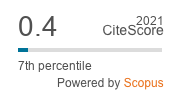Oxidative effects of tarragon (Artemisia dracunculus L.) on biostages stages of Drosophila melanogaster Meigen
DOI:
https://doi.org/10.33307/entomon.v41i1.120Keywords:
Drosophila, Artemisia dracunculus, oxidative stress, malondialdehyde, glutathione- S-transferaseAbstract
Tarragon (Artemesia dracunculus L.) is a traditional spice often used in local food dishes. This study was undertaken to determine the effects that nutritional tarragon has on oxidative stress in various developmental stages of Drosophila melanogaster Meigen (Diptera: Drosophilidae). Larvae of D. melanogaster were reared to adulthood on artificial diets containing varying amounts of tarragon ranging from 10 to 2000 μg. The effects of the various concentrations of tarragon on major indicators of oxidative stress including lipid peroxidation products, the production of malondialdehyde (MDA) and detoxification enzyme, and glutathione-S-transferase (GST) activity were investigated in 3rd instar larvae, pupae and adult fruit flies. The results indicate that the effectiveness of tarragon as an oxidative stress agent in D. melanogaster is dependent on its concentration in the fly's diet.
Downloads
Published
How to Cite
Issue
Section
License
Copyright (c) 2016 ENTOMON

This work is licensed under a Creative Commons Attribution-ShareAlike 4.0 International License.


